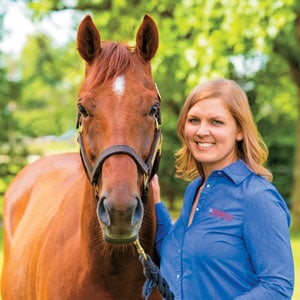Man vs. Machine on Post-Nerve-Block Lameness Evaluation
Which limb is lame? Even practitioners who handle lameness cases day in and day out second-guess each other’s assessments (and even their own) when pinpointing a mild lameness. While developments of tools such as inertial sensor systems (ISS) have enabled more objective lameness measurements, veterinarians are still determining if they can use these tools effectively in the field and combine them with subjective assessment and, if so, how.
Indeed, agreement among clinicians about where a mild lameness is tends to be poor (only 50-60%). So Josh Donnell, DVM, equine sports medicine and rehabilitation resident at Colorado State University’s Orthopaedic Research Center, in Fort Collins, was curious if an ISS would improve lameness assessment post-blocking and could be used outside the confines of a veterinary clinic. He presented the results from the research he and professor of Equine Surgery and advisor David D. Frisbie, DVM, PhD, Dipl. ACVS, ACVSMR, completed at the 2015 American Association of Equine Practitioners Convention, held Dec. 5-9 in Las Vegas.
“Regionalization of pain ‘blocking’ is the gold standard (for lameness diagnosis), but there is fair to poor agreement between clinicians,” he said. “There are some objective devices that are being used and sought after, but currently there’s a lack of repeatable methods.”
In the experiment he dubbed “man vs. machine,” Frisbie being the man they pitted against the ISS, experienced lameness clinicians evaluated 36 horses 181 times (five lameness exams, plus or minus three, per horse) in the field—specifically, they ran the experiment out of Frisbie’s practice Equine Sports Medicine (in Pilot Point, Texas) while at national and international events
Create a free account with TheHorse.com to view this content.
TheHorse.com is home to thousands of free articles about horse health care. In order to access some of our exclusive free content, you must be signed into TheHorse.com.
Start your free account today!
Already have an account?
and continue reading.

Written by:
Stephanie L. Church, Editorial Director
Related Articles
Stay on top of the most recent Horse Health news with











